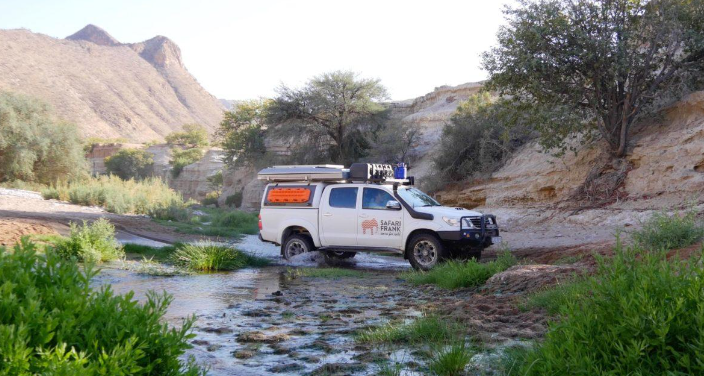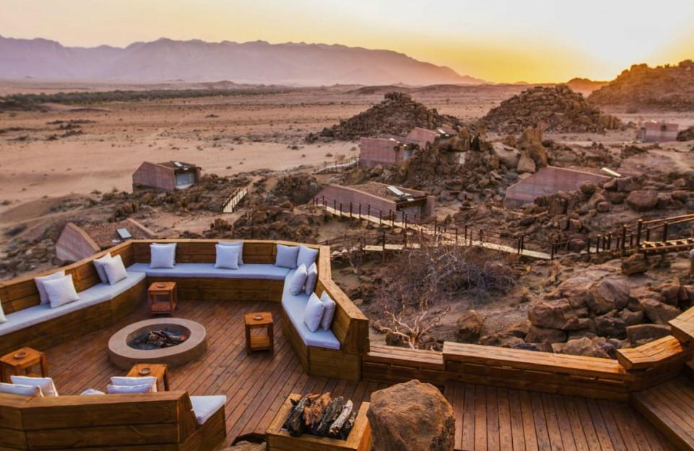From Dunes to Canyons: A Self-Drive Safari Journey Through Namibia’s Epic Landscapes
 Welcome to the land of stark beauty, wild horizons, and dramatic landscapes – Namibia. Situated in southwestern Africa, Namibia is a country that defies the ordinary. It’s a place where deserts meet the ocean, where towering dunes dwarf everything in sight, and where deep canyons carve through the ancient rock.
Welcome to the land of stark beauty, wild horizons, and dramatic landscapes – Namibia. Situated in southwestern Africa, Namibia is a country that defies the ordinary. It’s a place where deserts meet the ocean, where towering dunes dwarf everything in sight, and where deep canyons carve through the ancient rock.
While this may not be your typical beach holiday, a Namibia self drive safari promises to be an adventure you’ll never forget! So, take five, kick back and read on below to find out everything for you know about hitting the road on a self-drive safari through the beautiful ‘Soul of Africa’.
Table of Contents
- 1 Why Choose a Self-Drive Safari in Namibia?
- 2 Top Destinations to Visit on a Namibia Self-Drive Safari
- 3 Sossusvlei: Where Giants Roam
- 4 Swakopmund: Where Desert Meets the Ocean
- 5 Etosha National Park: The Heart of Wildlife
- 6 Windhoek: A Taste of Modern Namibia
- 7 Fish River Canyon: A Journey to the Abyss
Why Choose a Self-Drive Safari in Namibia?
Namibia is a self-drive enthusiast’s paradise. With its well-maintained roads, clear signage, and a network of campsites, it’s one of the most accessible countries for independent travellers. Driving through Namibia allows you to set your own pace, explore remote areas, and truly connect with the land and its people.
This self-drive safari adventure will lead you from the mesmerising dunes of Sossusvlei to the jaw-dropping depths of Fish River Canyon, with plenty of breathtaking stops along the way. The key is choosing the right time to visit, as weather conditions can make or break your journey. To help you plan, here’s a table highlighting the best months to visit Namibia for a self-drive safari:
| Month | Best for | Weather |
|---|---|---|
| May – October | Wildlife viewing | Dry, mild, and sunny |
| November – April | Scenic beauty | Green landscapes, warm |
 Top Destinations to Visit on a Namibia Self-Drive Safari
Top Destinations to Visit on a Namibia Self-Drive Safari
When it comes to planning your once-in-lifetime self-drive safari adventure through Namibia, you’re truly spoiled for choice. Whether it’s the vast deserts, unique coastal towns, or thriving wildlife, Namibia’s diverse offerings cater to every travellers desire. For a little doze of inspiration, here’s 5 destinations we recommend you simply must visit during you time in this remarkable country:
Sossusvlei: Where Giants Roam
Our journey begins in the heart of the Namib Desert, home to the enormous Sossusvlei dunes. This is where giants rise from the earth, reaching heights of over 300 meters. The most famous among them is Big Daddy, a colossal dune that offers an unforgettable sunrise climb and panoramic views.
To experience the dunes at their most photogenic, the best time to visit is during the cooler, drier months from May to October. The temperatures are more comfortable, and the clear skies guarantee stunning photographs.
A highlight of Sossusvlei you simply can’t overlook is Deadvlei, a surreal white clay pan dotted with the ancient, twisted skeletons of camelthorn trees. The contrast between the bleached clay, the ebony trees, and the fiery orange dunes is a sight to behold.
Your self-drive adventure will lead you through the rolling dunes to these natural wonders. Just remember to bring plenty of water, as the desert can be unforgiving!
Swakopmund: Where Desert Meets the Ocean
As you journey west from the desert, you’ll arrive at the charming coastal town of Swakopmund. This is a perfect place to recharge after the desert’s harsh beauty. The cool sea breeze and picturesque promenade make it an ideal stopover point and there are plenty of stunning hotels and lodges where you can rest your head for the night.
Swakopmund offers a wide range of activities, from quad biking on the dunes to exploring the eerie Skeleton Coast. You can also savour some of the freshest seafood in the country while watching the sun dip below the Atlantic.
If you’re a fan of marine wildlife, whilst in Swakopmund we also recommend taking a trip to the nearby Cape Cross. Here you can watch the incredible sight over thousands upon thousands of Cape Fur seals going about their business!
 Etosha National Park: The Heart of Wildlife
Etosha National Park: The Heart of Wildlife
Heading north, Etosha National Park beckons with its extraordinary wildlife encounters. Etosha’s enormous salt pan is visible from space and provides a unique backdrop for game viewing. The dry season, from May to October, is the prime time for wildlife enthusiasts.
You can expect to see elephants, lions, zebras, giraffes, and countless other species congregating at the waterholes. Etosha offers both guided and self-drive safaris, and the latter allows you the freedom to choose your own path and stay at the park’s well-equipped campsites.
Windhoek: A Taste of Modern Namibia
Before venturing to the southern part of the country, stop in the capital city, Windhoek. This bustling city offers a fascinating blend of modern and traditional Namibian culture. You can visit local markets, dine in top-notch restaurants, and sample the country’s finest beers.
During your stay in Windhoek, it would also be remiss not to hit the streets and admire the local architecture, many of it inspired by the country’s German colonial past. The Christuskirche church is a stunning structure to admire, as is St Mary’s (be sure to take some amazing exterior shots).
Fish River Canyon: A Journey to the Abyss
Leaving Windhoek behind, you’ll set your sights on Fish River Canyon, one of Africa’s most impressive natural wonders. This colossal chasm plunges to depths of over 500 meters and stretches for almost 160km. Hiking the Fish River Canyon is a challenging but rewarding experience, only possible from May to September due to weather conditions.
As you embark on your journey to the canyon, the scenery will change dramatically. From arid plains to rocky plateaus, the ever-shifting landscape will keep you engaged.
 Planning Your Namibia Self-Drive Safari
Planning Your Namibia Self-Drive Safari
A self-drive safari through Namibia is a thrilling adventure but it’s not exactly a day at the beach! it requires meticulous planning to ensure a smooth and enjoyable journey. Here are some key tips to help you make the most of your trip:
Renting a Vehicle: Select a reliable 4×4 vehicle with good ground clearance. This is essential for navigating Namibia’s gravel roads, sandy tracks, and occasionally rough terrains.
Accommodation: Booking accommodations well in advance is advisable, especially during the high season. Popular destinations like Sossusvlei and Etosha tend to fill up quickly. However, if you prefer not to go through the hassle of organising accommodations yourself, there’s an alternative. You can opt to book with a trusted safari tour operator who can take care of everything, including accommodations, activities, and travel logistics. This option provides a worry-free experience, allowing you to focus on enjoying the journey.
Fuel and Provisions: Stock up on fuel and essential provisions whenever you have the opportunity. Some areas in Namibia are quite remote, and it’s best to be prepared. Reliable fuel stations are scattered across the country, but distances can be considerable.
Navigation: While GPS can be helpful, it can be unreliable in remote areas. A paper map and a good old-fashioned compass can serve as valuable backup tools. Additionally, some self-drive tours may provide GPS devices with pre-programmed routes.
Permits and Entry Fees: Be aware of park fees and permits. These costs can vary depending on the location and the activities you plan to undertake. Be sure to research these fees in advance to avoid any unexpected surprises.
Travel Insurance: Ensuring you have comprehensive travel insurance is crucial, covering your vehicle, potential medical emergencies, and other unforeseen circumstances that might arise during your self-drive safari. A well-chosen insurance plan can provide peace of mind throughout your journey.
 Top Destinations to Visit on a Namibia Self-Drive Safari
Top Destinations to Visit on a Namibia Self-Drive Safari Etosha National Park: The Heart of Wildlife
Etosha National Park: The Heart of Wildlife








